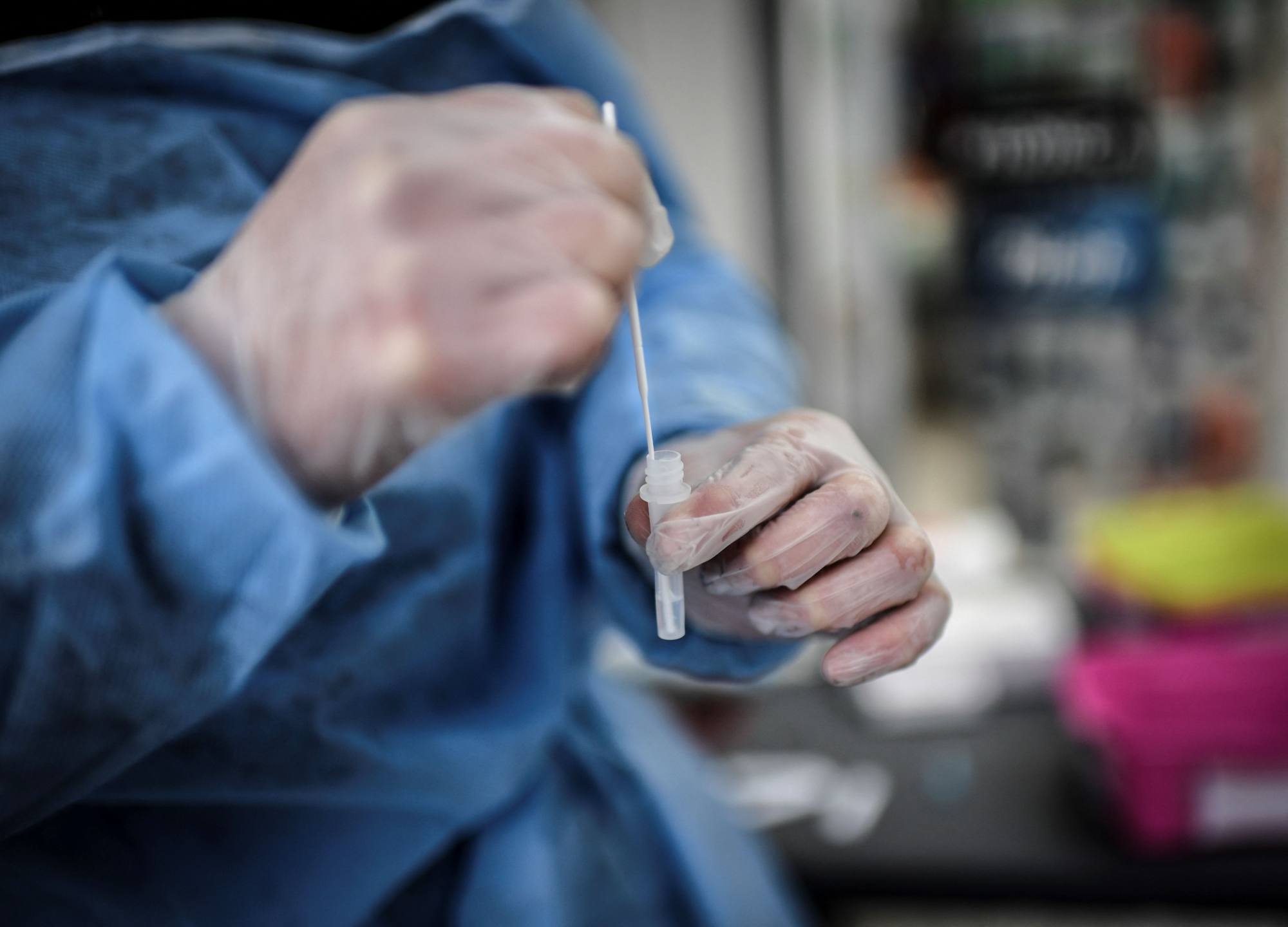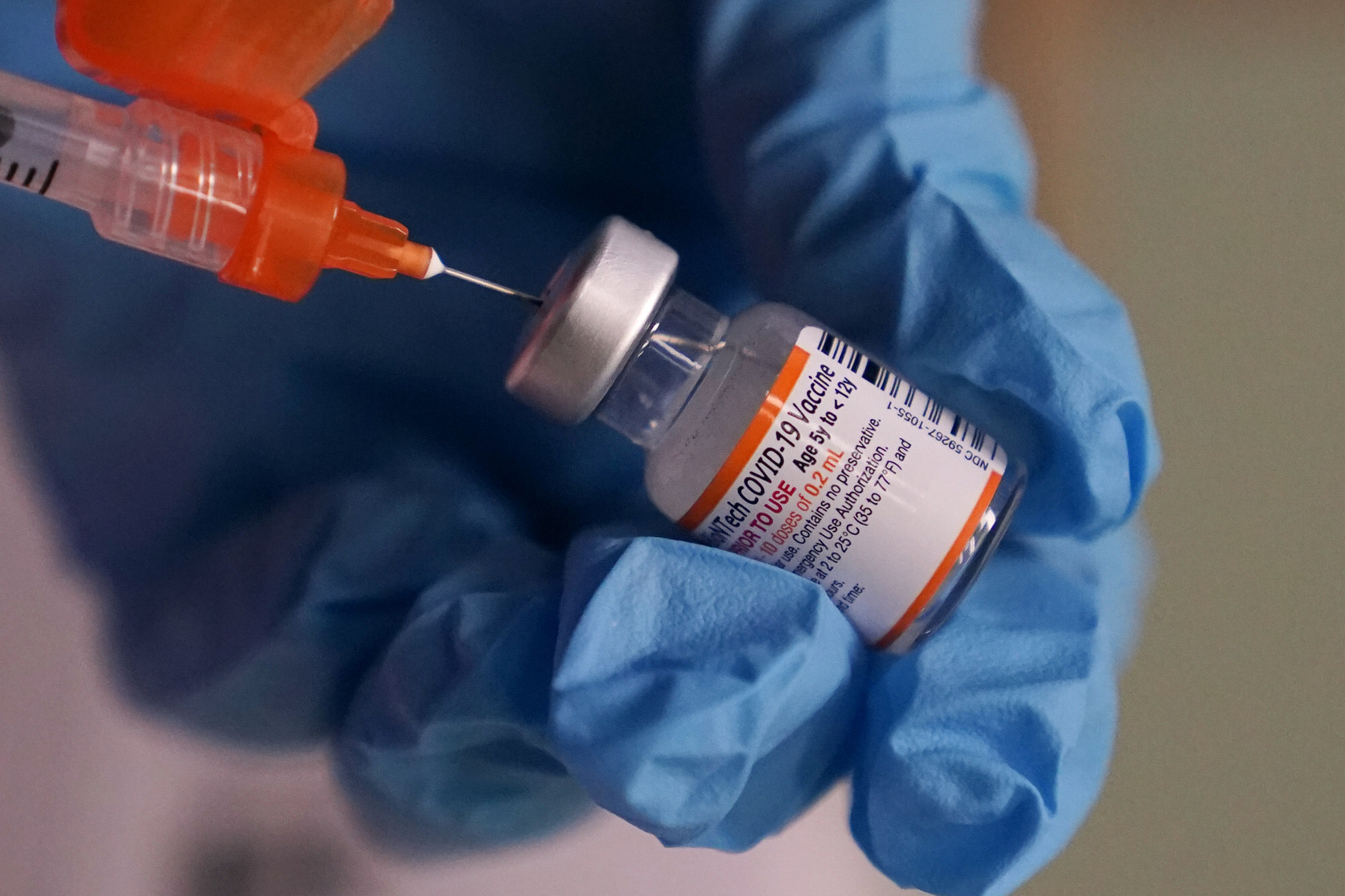
Coronavirus: new Covid-19 variants emerge, likely reinfecting Omicron survivors
- Current data do not suggest BA.4 and BA.5 cause people to get sicker than earlier Omicron variants, but BA.4 and BA.5 do appear to be more transmissible
- One infectious disease expert says unvaccinated people will have a higher chance of not doing well if infected by the new variants
A pair of new Omicron subvariants has emerged, raising the possibility that survivors of earlier Omicron strains can get reinfected.
BA.4 and BA.5 have gained increasing attention in South Africa as weekly coronavirus cases tripled in the last two weeks, according to data from Johns Hopkins University.
“It really came out of the blue over the weekend. We were already settling down with BA.2.12.1, and then BA.4 and BA.5?” said Dr. Peter Chin-Hong, an infectious diseases expert at University of California, San Francisco. “It just seems like the latest chapter of a never-ending saga.”
The rapid growth of BA.4 and BA.5 in South Africa has implications for a potential future surge in other countries. Until now, scientists had been reassured that people who survived the first Omicron variant over the winter, BA.1, were unlikely to be reinfected by the even more infectious subvariant BA.2, which is now dominant nationwide.

But the surge in cases in South Africa of BA.4 and BA.5 follow an earlier Omicron wave. An estimated 90 per cent of South Africa’s population has immunity to the earlier Omicron variants either due to surviving a natural infection or through vaccination.
“If 90 per cent of people are immune already, and they’re seeing a surge in cases, it means that this particular dynamic duo [BA.4 and BA.5] are causing more reinfections – even in people who already had Omicron,” Chin-Hong said.
Only a small number of cases of BA.4 and BA.5 have been documented in California. In April, one case of BA.5 was documented, and in March, one case of BA.4 was confirmed, according to the California Department of Public Health.
3 Chinese inactivated vaccine shots protect against Omicron: paper
The Omicron subvariant BA.2 remains California’s dominant variant, accounting for 88 per cent of nearly 3,600 analysed cases in April, while the ascendant BA.2.12.1 and its relative, BA.2.12, accounted for 9 per cent of cases.
BA.2.12.1 is estimated to be 25 per cent more transmissible than BA.2.
Will BA.4 and BA.5 lead to another wave in other countries? Some health experts say South Africa’s BA.4/BA.5 wave could repeat in the other countries – but probably not immediately.
Current data do not suggest that BA.4 and BA.5 cause people to get sicker than the earlier Omicron variants. But BA.4 and BA.5 do appear to be more transmissible, Chin-Hong said, and have a better shot at evading existing immunity, given the surge in South Africa.
UK Covid at highest level as immunity wanes
People who are unvaccinated and haven’t been previously exposed to the coronavirus will have a higher chance of not doing well if infected, Chin-Hong said.
The emergence of BA.4 and BA.5 means “that Omicron is still very much alive and well, and seeking ways in which it can evolve to be even more transmissible,” said Dr. Robert Kim-Farley, epidemiologist and infectious diseases expert with the Fielding School of Public Health at the University of California, Los Angeles (UCLA).
Fortunately, the available data so far have not suggested the coronavirus is evolving to give infected people a higher chance of hospitalisation or death.
Still, people should be aware of where the pandemic is heading in their own communities, Kim-Farley said. When transmission is high, it’s time to be more vigilant about wearing masks in indoor crowded places, he said.
And people who are at higher risk for severe illness and death from Covid-19 may want to avoid risky situations entirely, Kim-Farley said.

Chin-Hong said it’s important for people to know ways to reduce risk. Besides getting up-to-date on vaccinations and booster shots and wearing a mask in indoor public settings, people also can reduce risk by learning where to get Paxlovid, an anti-Covid pill that can reduce the risk of hospitalisation by 90 per cent.
For the immunocompromised, Evusheld is available to prevent Covid-19 among people who haven’t been exposed to the coronavirus and either have a weakened immune system because of a medical condition or cannot get vaccinated for medical reasons.
Kim-Farley said the more worrisome wild card would be a totally new variant more likely to cause severe illness and death, and against which vaccinations and natural immunity would be less effective.
“The important take-home message for everyone is, still, to be vaccinated, and, if eligible, boosted because these are life-saving vaccines,” Kim-Farley said.

